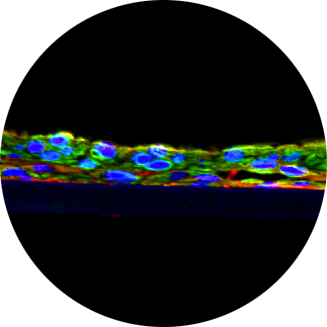Application of MelanoDerm, an Epidermal Model Containing Functioning Melanocytes for Skin Lightening Studies
- TR Number: 1049
- Authors: Michael Bachelor, Bridget Breyfogle, Edward Gustafson and Mitchell Klausner
- Materials Tested: magnesium ascorbate phophate, spot correcter, kojic acid
Considerable interest exists in evaluating cosmetic and/or skin care pharmaceutical formulations which cause lightening of the skin. These products are utilized to cosmetically alter one’s natural skin color or to combat skin pigmentation disorders such as melasma, post-inflammatory hyperpigmentation, and other hyperpigmentation lesions. In order to aid in the development and testing of such products, we have developed a melanogenesis/whitening protocol using MelanoDerm, a highly differentiated, three-dimensional tissue culture model of human epidermis that contains normal human melanocytes (NHM) and keratinocytes (NHK). The use of this 3D model along with the whitening protocol can provide invaluable in vitro data as an early screening tool for raw materials prior to the commencement of costly clinical trials. Skin lightening protocols have been produced containing NHM of varying skin phototypes which follow the expected pigmentation level of the donor tissue, i.e. black>Asian>Caucasian. Tissues are treated topically three times a week over a two to three week treatment
period to mimic consumer application. Several over-the-counter skin lightening products were evaluated in MelanoDerm tissues containing NHM from black donors. Over the two-week period, control tissues became increasingly pigmented with retention of normal epithelial morphology. In contrast, tissues treated topically with cosmetic skin lightening agents containing Kojic acid or magnesium ascorbyl phosphate remained distinctly lighter than control cultures. The skin lightening effect on treated tissues was quantitatively evaluated for melanin content using a melanin assay. Treated tissues showed varied although significant changes in overall melanin content (reductions of 12-21%) compared to negative control (water-treated) tissues. The results described herein demonstrate the utility of this model for studying melanogenesis, skin lightening, and other pigmentation phenomena of skin in vitro.

